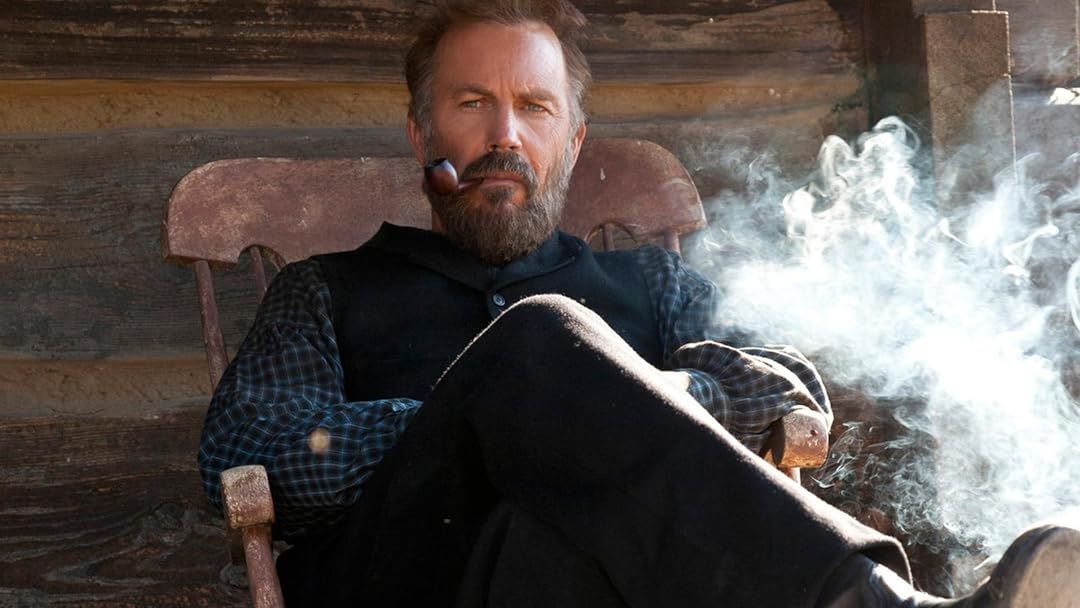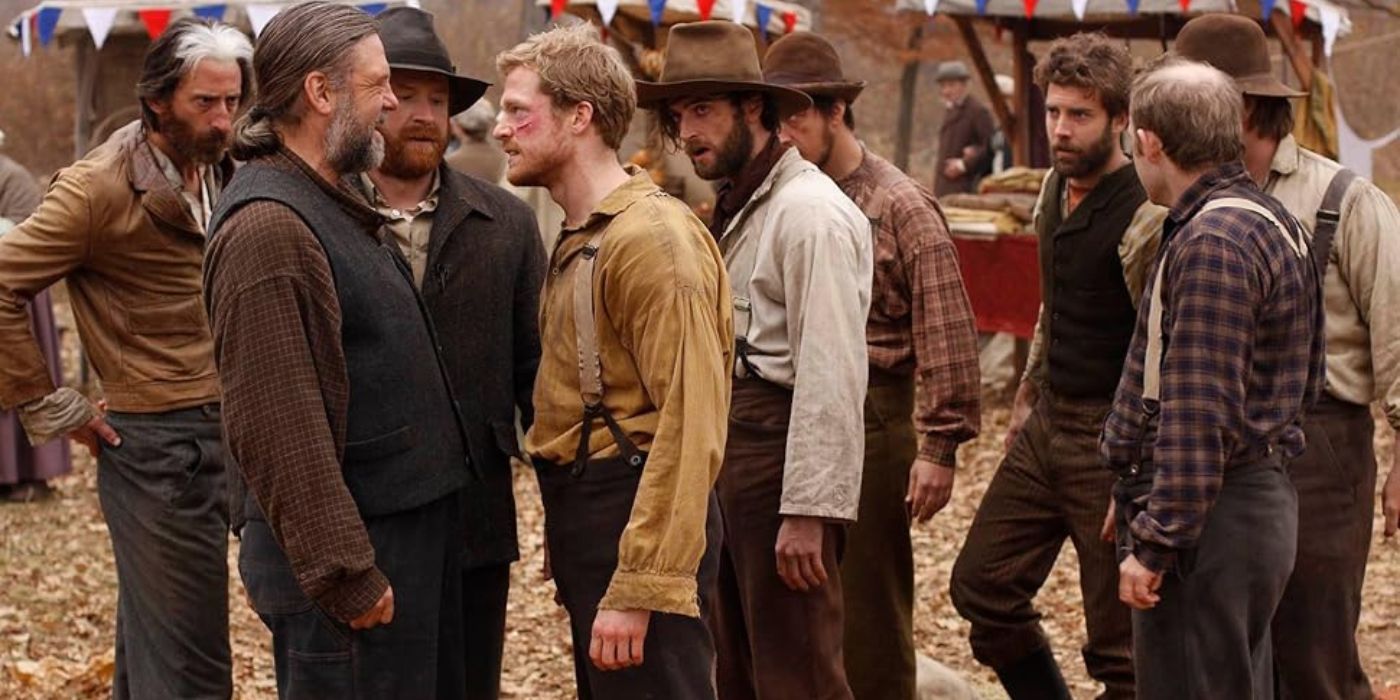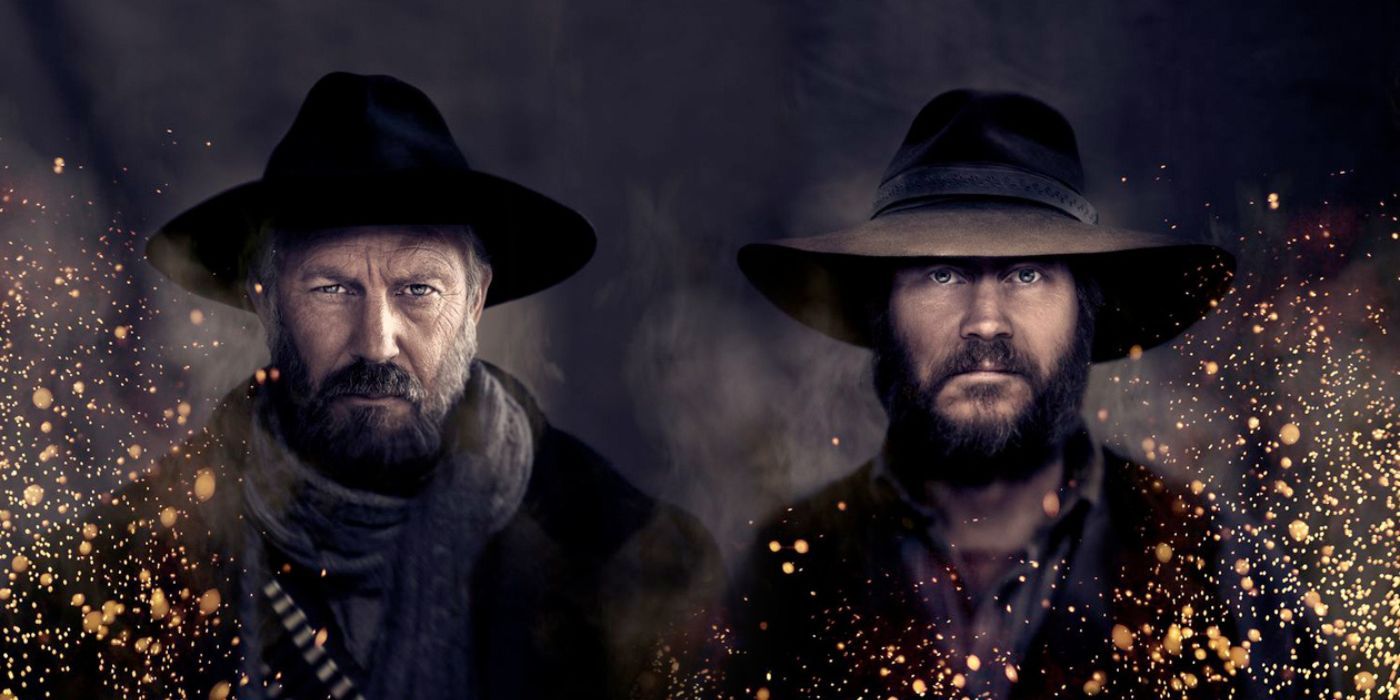
Kevin Costner has practically become synonymous with the Western genre, from the Academy Award-winning Dances with Wolves to his most recent release, Horizon: An American Saga. In recent years, he’s also had an undeniable influence on the resurgence of the genre in the realm of television, most notably with Taylor Sheridan’s smash-hit series Yellowstone on Paramount. Before the phenomenon of Yellowstone, however, Costner had taken part in another television project, one that took a much more traditional approach to Westerns, and even earned a Primetime Emmy win. Hatfields & McCoys told the true story of the infamous and violent 30-year-long feud between two families in the Old West. The show first aired on The History Channel in 2012 as a three-part miniseries and was considered to be one of the best TV shows of the year.
The show not only features Costner in perhaps one of his best roles, but also the late great Bill Paxton with an equally strong and engrossing performance as his opposite. Even though Costner didn’t direct the series, with him having served as one of its producers, it has his fingerprints all over it, and it’s more than obvious just how dedicated he was to bringing the story to the screen. Of course, like most adaptations of true events in history, the show takes a few creative liberties, but it’s certainly for the better, as most of them only elevate the tension within the story throughout. For any fans of Costner’s work or Westerns in general, Hatfields & McCoys is one experience that they should not be missing out on.
What Is the Story of Hatfields & McCoys?

Hatfields & McCoys tells the saga of one of American history’s most violent and bitter rivalries between two families, led respectively by their patriarchs, William Anderson “Devil Anse” Hatfield and Randolph “Randall” McCoy. The first episode opens during the latter half of the American Civil War and shows that both Anse and Randall had fought alongside each other in the Confederacy. The feud between their two families seemingly started after Anse deserted his position, having decided that their cause wasn’t worth fighting for, leading Randall, who was taken as a prisoner of war, to harbor a deep grudge against his former comrade. The feud reached a new height, however, when not only did the McCoy family demand retribution after it was discerned that a certain Hatfield member murdered one of their own, but also when the two families took an argument over the possession of a pig to a court of law.
In the two episodes that follow, there is a series of even more tense escalations and outbreaks of violence between the two families that take place over three decades. It’s a show that’s filled with bitter pursuits of vengeance, frustrating misunderstandings, and senselessly violent murders. There’s even a Romeo and Juliet-style romance that occurs between two members on both sides of the feud. Unfortunately, just like Romeo and Juliet, this was a romance that didn’t have a happy ending.
Is Hatfields & McCoys Accurate to Its Historical Influence?

When telling a story of true historical events, it’s only natural that there would be certain changes made for the sake of drama and to make the story more entertaining for the audience. Even though it mostly manages to stay true in the way it depicts certain events, Hatfields & McCoys is just as guilty of this as any other adaptation of a real-life story. For example, the show goes out of its way to portray the murder of Harmon McCoy as if it were committed by Anse’s uncle, Jim Hatfield. In actuality, however, the circumstances surrounding Harmon’s death were never proven.
Another example of these sorts of misrepresentations within the show includes the way it depicts Appalachia almost as if it’s the wild west. In the show, characters are seen shooting one another with practically no consequence of the law or law enforcement to be found. This is not entirely accurate, as the area was actually a bit more legally well-structured than the show seems to claim it was. The show also rooted the feud between the two families in a series of ongoing interpersonal and romantic quarrels, and even within conflicts that arose from the civil war. As it turns out, while many personal squabbles added fuel to the fire, including the forbidden love between Johnse Hatfield and Rose McCoy, the main catalyst for the feud may have been more economical.
It’s more than likely that the feud started from jealousy over the economic betterment of one family rather than the other. An article from Time highlighted this possibility, claiming “the rising economic stakes caused heightened tensions within communities” and that the friction between investors and landowners would often cause the communities in the area to “turn against one another”. This fact was further backed up in the article by Chuck Keeney, an Assistant Professor of History at Southern West Virginia Community College. In the article, he claimed that “The fact that they were left out of a lot of the economic opportunities that they wanted to be a part of really enhanced and exacerbated the violence”.
What Makes Hatfields & McCoys a Classic Miniseries

- All three episodes of Hatfields and McCoys are now available to be streamed for free on Tubi.
One of the greatest strengths of Hatfields & McCoys is the way it chooses to tell its story. Rather than stretch out its story over 10 episodes like most other miniseries of what it currently considered the golden age of television, the show knew exactly how to compact a decades-long saga into only three installments. Not only that but the story of the feud is also portrayed from a more impartial perspective. Rather than take sides on any one issue between the Hatfield and the McCoy families, the show tries to provide a sort of mutual understanding and highlight the grayer complexities that both sides are facing. On top of all that, despite certain historical inaccuracies, the show also manages to capture the grit and grime of the period.
The show didn’t exactly have the same sort of cinematic production value that one would see in an HBO series. However, it more than made up for it with what its budget was able to provide, including some rather impressive costumes and dedicated performances from its cast. In the role of Anse, Kevin Costner perfectly captures the right balance of arrogance and reasonableness of the Hatfield family patriarch. The same goes for Bill Paxton as Randall McCoy, who gives a performance that is sure to remind viewers just how much his talent is still truly missed. The series also features other recognizable faces, such as a young Boyd Holbrook, perhaps best known as the villainous Donald Pierce in Logan, Noel Fisher from Shameless, and even Mare Winningham, who also earned herself an Emmy nomination for her part.
Similar to Roots or the 1990s adaptation of Stephen King’s It, Hatfields & McCoys has managed to hold down quite a legacy as a memorable event in television history. With the Western genre becoming more and more relevant again within the realm of television, it’s an extremely riveting six hours that is sure to satisfy history buffs as well as casual viewers looking for pure entertainment.
